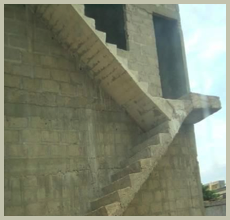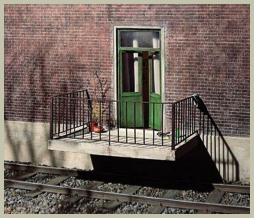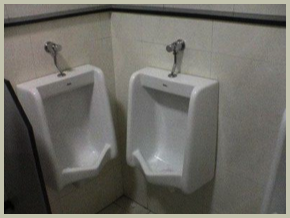MLC Newsletter
Volume I
Energy Efficiency Tax Credit
Contributed by Colin Coryell Creative Fenestration (609) 218-8024
Contributed by Colin Coryell Creative Fenestration (609) 218-8024
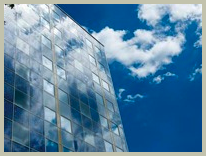
- What windows and doors are eligible for the credit? Windows, skylights and exterior doors that meet the ENERGY STAR rating.
- How much is the tax credit? The tax credit is $200 for windows and skylights and $500 for exterior doors. The maximum credit for all taxable years for qualifying products is $500 — no more than $200 of the credit can be attributable to expenses for windows and skylights.
- What percentage of the product(s) purchase price is eligible? Ten percent of the purchase price up to the cap listed in #2 (not including labor or materials for installation).
- When does the tax credit take effect and how long does it last? The tax credit begins January 1, 2011 and expires December 31, 2011. Purchasers of qualifying windows, skylights, and exterior doors must have them installed in their principal residence by December 31, 2011.
- How does the tax credit compare to the previous credits? Are consumers who took advantage of those credits eligible for the new tax credit? The 2011 tax incentives revert to the 2005-2008 levels: 10% of the cost installing efficient windows. Anyone who has taken advantage of the 2006 - 2010 programs cannot apply for incentives that exceed the cap. Example: if a consumer claimed $500 in 2006 for a qualifying exterior door, the tax credit is exhausted; if only $300 was claimed in 2009, $200 can still be claimed - for a total of $500.
- Where can I get more information on the tax credits? Visit http://www.energystar.gov/index.cfm?c=home.index. The IRS will issue additional specific guidance soon. Check http://www.irs.gov for updated information.
Download PDF
All Work And No Play
Can you beat our Project Manager's record of 118 moves in 97 seconds? See our Featured Projects section for more pictures of this beautiful home.
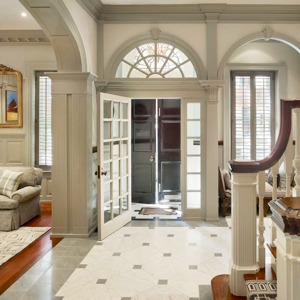
Product of the Month
Hidden fasteners for decking.
We have been using TimberTech’s CONCEALoc hidden fasteners on our deck installations and are very pleased with them. The absence of screw heads on the surface of the deck boards provides a clean, uninterrupted look that has been missing in traditional face-screwed installations. While we have used them with TimberTech’s environmentally friendly, engineered products, the fasteners can also be used with other decking materials.
We have been using TimberTech’s CONCEALoc hidden fasteners on our deck installations and are very pleased with them. The absence of screw heads on the surface of the deck boards provides a clean, uninterrupted look that has been missing in traditional face-screwed installations. While we have used them with TimberTech’s environmentally friendly, engineered products, the fasteners can also be used with other decking materials.
New Lighting Technologies Coming
Contributed by Tony Ferraina Ferraina Electrical Contracting, Inc. (609) 868-3222
Contributed by Tony Ferraina Ferraina Electrical Contracting, Inc. (609) 868-3222
The new federal energy efficiency standards, set to start in 2012, mandate that all new light fixtures must be 30 percent more efficient than traditional incandescent light bulbs. While the mandate does not address existing light fixtures, it is a good time to take a look at the options home owners have to improve the lighting in their homes with more energy efficient lighting. The current technology consists primarily of incandescent, halogen, Compact Fluorescent Light (CFL) and Light Emitting Diode (LED) lighting. Until recently, the only real option for replacing incandescent bulbs was to use the odd looking CFL bulbs. However, with the growth of LED lighting, the options are now wider and more appealing. It even means we could turn to slightly more efficient incandescent's that use halogen technology.
Although they are more expensive (for now), I find that LED lamps will be the way to go in the future. They will last longer (5-7 years of continuous use versus 1800-2300 hours for incandescents), burn cooler and have much better light output (with various levels of brightness), will turn on immediately unlike many of the CFL lamps and do not contain mercury (as the CFL lamps do).
Cree LED lights, like the CR6 LED downlight, are nearly 85 percent more efficient than incandescent lights. The technology in LED lighting is advancing rapidly. The new LED recessed light fixture replacement can be used in most standard 6" recessed fixtures and consists of both the lamp and trim. We can now use them in outdoor fixtures, recessed fixtures, surface and pendant fixtures and most recently undercabinet lineal low voltage lighting. I have recently used the Cree LED recessed downlight replacements on a new construction project with a total of 96 recessed fixtures throughout a 3 story house. The cost was high but the effect is incredible. The cost of the LED replacement fixtures is still quite high, although the price has dropped almost 50% in the past year and it is expected that the cost will continue to drop.
While, due to the cost, I would not necessarily recommend replacing all of the recessed fixtures with LEDs right now, you may want to consider replacing some of them to start reducing your electric bill now.
Although they are more expensive (for now), I find that LED lamps will be the way to go in the future. They will last longer (5-7 years of continuous use versus 1800-2300 hours for incandescents), burn cooler and have much better light output (with various levels of brightness), will turn on immediately unlike many of the CFL lamps and do not contain mercury (as the CFL lamps do).
Cree LED lights, like the CR6 LED downlight, are nearly 85 percent more efficient than incandescent lights. The technology in LED lighting is advancing rapidly. The new LED recessed light fixture replacement can be used in most standard 6" recessed fixtures and consists of both the lamp and trim. We can now use them in outdoor fixtures, recessed fixtures, surface and pendant fixtures and most recently undercabinet lineal low voltage lighting. I have recently used the Cree LED recessed downlight replacements on a new construction project with a total of 96 recessed fixtures throughout a 3 story house. The cost was high but the effect is incredible. The cost of the LED replacement fixtures is still quite high, although the price has dropped almost 50% in the past year and it is expected that the cost will continue to drop.
While, due to the cost, I would not necessarily recommend replacing all of the recessed fixtures with LEDs right now, you may want to consider replacing some of them to start reducing your electric bill now.
MLC DIY Tip #37
Stripped screw? Try placing a rubber band between the screwdriver tip and the screw. Turn slowly and extract away.
Hammered Humor
Award winning construction jobs from some of our competitors.
